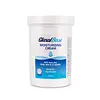What's inside
What's inside
 Key Ingredients
Key Ingredients

No key ingredients
 Benefits
Benefits

No benefits
 Concerns
Concerns

 Ingredients Side-by-side
Ingredients Side-by-side

Water
Skin ConditioningGlycerin
HumectantUrea
BufferingCetearyl Alcohol
EmollientGlyceryl Glucoside
HumectantCyclomethicone
EmollientSodium Lactate
BufferingButyrospermum Parkii Butter
Skin ConditioningCaprylic/Capric Triglyceride
MaskingDicaprylyl Ether
EmollientMethylpropanediol
SolventOctyldodecanol
EmollientTapioca Starch
Glyceryl Stearate Se
EmulsifyingHydrogenated Coco-Glycerides
Emollient1,2-Hexanediol
Skin ConditioningArginine Hcl
Skin ConditioningSodium Chloride
MaskingSodium PCA
HumectantDimethiconol
EmollientPhenoxyethanol
PreservativeLactic Acid
BufferingSodium Cetearyl Sulfate
CleansingChondrus Crispus Extract
Skin ConditioningCarnitine
CleansingMannitol
HumectantSerine
MaskingSucrose
HumectantCeramide NP
Skin ConditioningCitrulline
Skin ConditioningGlycogen
HumectantHistidine Hcl
Skin ConditioningAlanine
MaskingThreonine
Glutamic Acid
HumectantLysine
Skin ConditioningWater, Glycerin, Urea, Cetearyl Alcohol, Glyceryl Glucoside, Cyclomethicone, Sodium Lactate, Butyrospermum Parkii Butter, Caprylic/Capric Triglyceride, Dicaprylyl Ether, Methylpropanediol, Octyldodecanol, Tapioca Starch, Glyceryl Stearate Se, Hydrogenated Coco-Glycerides, 1,2-Hexanediol, Arginine Hcl, Sodium Chloride, Sodium PCA, Dimethiconol, Phenoxyethanol, Lactic Acid, Sodium Cetearyl Sulfate, Chondrus Crispus Extract, Carnitine, Mannitol, Serine, Sucrose, Ceramide NP, Citrulline, Glycogen, Histidine Hcl, Alanine, Threonine, Glutamic Acid, Lysine
Ingredients Explained
These ingredients are found in both products.
Ingredients higher up in an ingredient list are typically present in a larger amount.
Cetearyl alcohol is a mixture of two fatty alcohols: cetyl alcohol and stearyl alcohol. It is mainly used as an emulsifier. Emulsifiers help prevent the separation of oils and products. Due to its composition, it can also be used to thicken a product or help create foam.
Cetearyl alcohol is an emollient. Emollients help soothe and hydrate the skin by trapping moisture.
Studies show Cetearyl alcohol is non-toxic and non-irritating. The FDA allows products labeled "alcohol-free" to have fatty alcohols.
This ingredient is usually derived from plant oils such as palm, vegetable, or coconut oils. There is debate on whether this ingredient will cause acne.
Due to the fatty acid base, this ingredient may not be Malassezia folliculitis safe.
Learn more about Cetearyl AlcoholWater. It's the most common cosmetic ingredient of all. You'll usually see it at the top of ingredient lists, meaning that it makes up the largest part of the product.
So why is it so popular? Water most often acts as a solvent - this means that it helps dissolve other ingredients into the formulation.
You'll also recognize water as that liquid we all need to stay alive. If you see this, drink a glass of water. Stay hydrated!
Learn more about Water